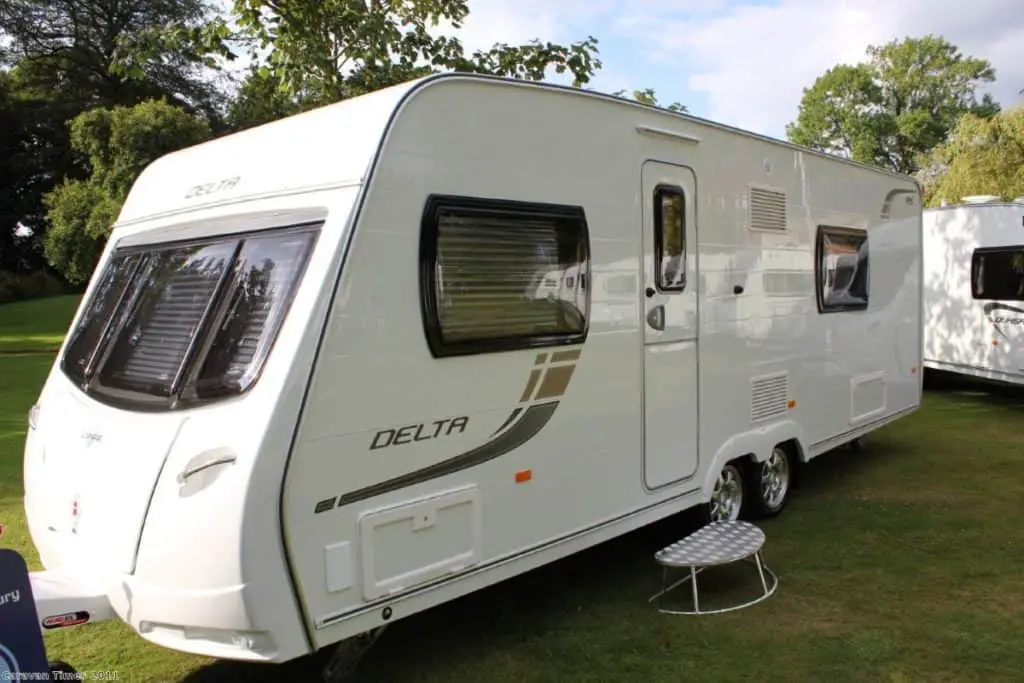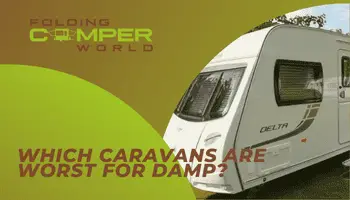Damp is an unfortunate reality that many caravans face at some point in their life. This is because they are prone to damp, water ingress, and mould as they tend to be more exposed to the elements, such as wind and rain. This can be especially damaging if you live in places like the UK, where the weather is wet for most of the year. Exposure to this weather for more extended periods can result in leakages and compromised sealants. For many of the older caravans with wooden construction, even putting them into storage during the colder months may prove pointless, as some people find their caravans to still be affected by damp and other mould issues when they take them out again.
Since damp is mainly seen in caravans that have a wooden construction, it can be argued that as long as you stay away from caravans constructed from a lot of wood, you should be able to keep your caravan safe from damp. From what I have found, only Swift caravans are totally wood free. Adria and Elddis caravans have wood frames; however, they are completely sealed. On the other hand, countless other caravan users argue that this is not the case, and even wood-free caravans can experience damp. This blog post will look at this in more detail as well as discuss where damp comes from and the places around your caravan you are most likely to find it.
Where damp comes from

The word ‘damp’ is used to describe an increase in moisture. This can happen in homes as well as in caravans. The cause of damp is usually condensation in your caravan or water ingress. If you have found damp within your caravan, before you can solve the issue, it is crucial to figure out which of these two processes has caused the damp.
Condensation
When the moisture content and temperature change in your caravan, a natural process occurs, creating condensation. For example, when the temperature falls, the moisture in the air condenses. This can be seen on the colder surfaces of your caravan, such as windows. This makes the surfaces feel cold and wet. If left unwiped for a long period of time, you may see black mould growing. You can also see this on fabric such as curtains. The condensation itself is not what causes the structural damage to your caravan, but the effect of this black mould (damp) is what can cause these issues. In addition to the caravan, it can also affect your respiratory health as the spores released by the black mould during the fungi’s reproduction cycle can irritate the lungs when inhaled.
Water ingress
If you find that your caravan has water ingress issues, it’s important to get this fixed. In the meantime, you should ensure that you get your caravan under a cover. This should be either a breathable and waterproof caravan cover or, if possible, in storage where it will be kept out of the wet weather completely. You also need to assess where the water is coming from and how it managed to get inside the caravan.
Caravans with the worst damp

If you’re about to purchase a new caravan, you may be thinking of completely avoiding any brands known for developing the most damp. Unfortunately, when it comes to damp in caravans, there is no clear cut answer for which ones are the worst for damp issues. I wanted to get the opinion of people who have been caravanning for a long time and have experience with multiple caravans. I made a post on the Practical Caravan online forum and asked users if any specific caravans have had damp issues. User ‘ProfJohnL’ said:
“Sadly, even if one brand or model does have a better than average history of staying damp free, it’s only an average, and that means they will have some that are very poor and others that may be better than average. The only consistent thing you can establish is that all models are inconsistent, and whilst one caravan coming off the production line might stay as dry as a bone for life, the very next one might be a mobile swimming pool. I have seen no caravan manufacturer that has really taken steps to improve the consistency of their production with significant verifiable results.”
Further down in this discussion, some of the users have suggested that since many caravans that do experience damp-related issues are constructed from wood, it would make sense to purchase a caravan with the least amount of wood in its construction. User ‘JezzerB’ explains:
“Let’s put it this way; which don’t get damaged if they do leak; those that don’t have wood in them. From what I can see, only Swift is totally wood free. Adria and Elddis have wood frames though supposedly sealed, and we love our Elddis. Bailey’s have wood floors, but nothing else and no plastic front or rear that is crack prone, but floor do rot, and I’m not totally sure re Coachman.”
Another user named ‘Mel’ also added to this and said:
“Adria has a reputation for less damp, but that may be an urban myth. Freedom vans are tiny but have different construction and are also reportedly better.”
Although most users agreed that there are no specific brands that are the worst when it comes to damp, two users explained that their dealership recommended them to stay away from what they described as the ‘Leaky Lunars’. User ‘Hutch’ said:
“When I was looking at purchasing my first caravan, I was told to stay clear of The Leaky Lunars, maybe it was an unfounded, as almost all brands have their leaking and damp problems.”
‘Beachball‘ is another user who agreed with Hutch’s comment and added:
“I was also told to stay away from a leaky Lunar by my caravan repairer, but he recommended the caravan I have now an Abbey; they are sound, and so far for a 14-year-old caravan, it is Damp free.”
Places you’re likely to find damp

If you think your caravan may have damp, it’s important to use a moisture meter to get a reading of the moisture content in your caravan. This will tell you if your caravan doesn’t have any potential damp.
If you suspect your caravan has damp, there are certain places within your caravan to check as these are the most common places where damp tends to grow. This is anywhere it’s possible for the sealant to fail, as this can allow water to creep in. Places you should check for damp include:
- Under any seams and joints
- Below awning rails
- Around the roof-lights
- Around the vents
- Under and around the windows
- Around door
- Around cupboards
- Behind the toilet
- Where the wall meets the ceiling
- In all lower storage areas where the wall meets the floor
- Any areas where pipework or other items enter or exit the caravan
The overall discussion on Practical Caravan shows the different experiences of all the caravan users. The majority explained that there is no way to calculate which caravans are the worst for damp, while others believed Lunar caravans to be the worst for damp. When deciding on which caravan to purchase, it may be best to buy a caravan that is closer to home rather than further afield, as this will allow you to make return visits to the dealer for warranty work if needed.


